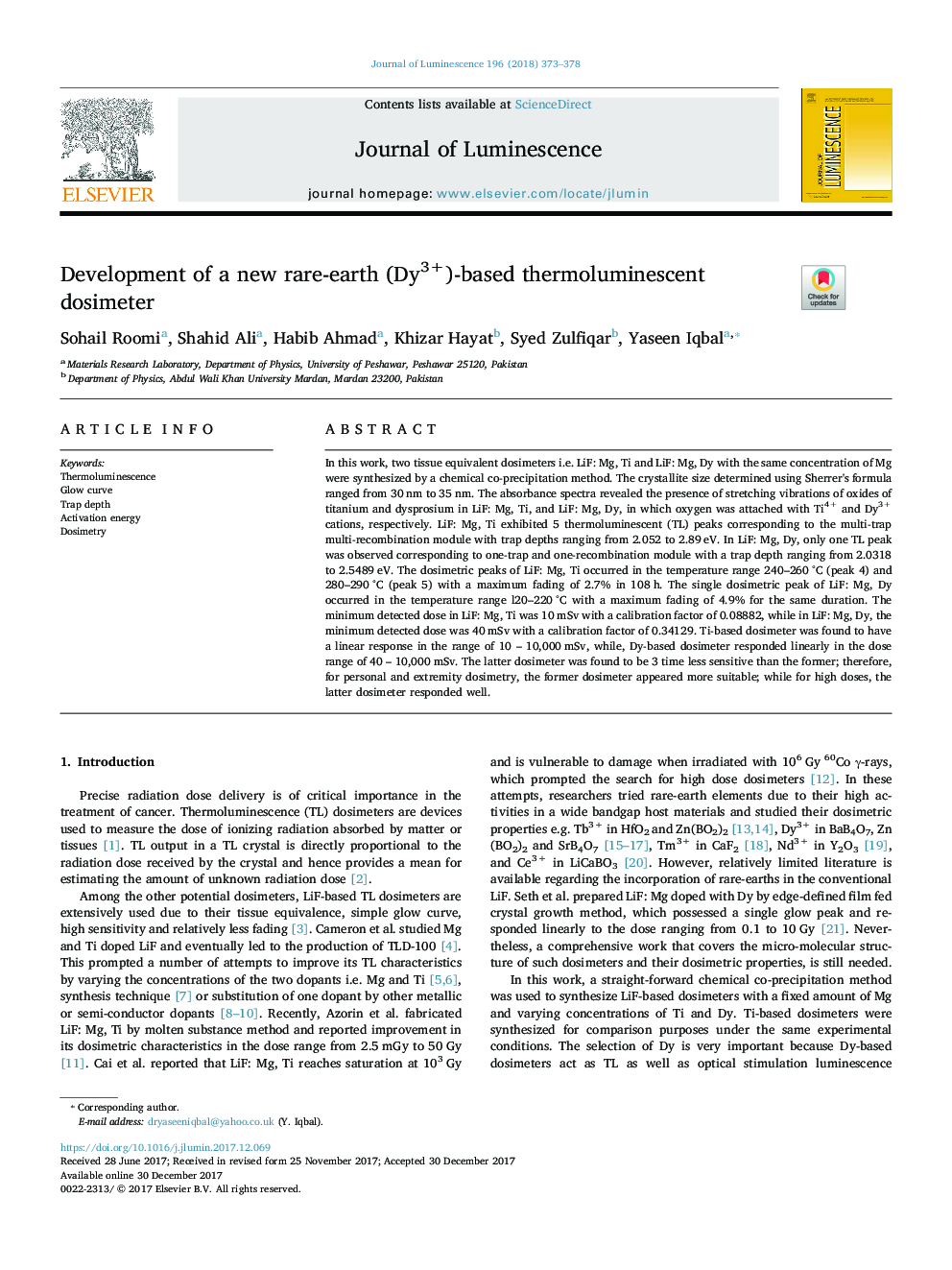| Article ID | Journal | Published Year | Pages | File Type |
|---|---|---|---|---|
| 7840467 | Journal of Luminescence | 2018 | 6 Pages |
Abstract
In this work, two tissue equivalent dosimeters i.e. LiF: Mg, Ti and LiF: Mg, Dy with the same concentration of Mg were synthesized by a chemical co-precipitation method. The crystallite size determined using Sherrer's formula ranged from 30 nm to 35 nm. The absorbance spectra revealed the presence of stretching vibrations of oxides of titanium and dysprosium in LiF: Mg, Ti, and LiF: Mg, Dy, in which oxygen was attached with Ti4+ and Dy3+ cations, respectively. LiF: Mg, Ti exhibited 5 thermoluminescent (TL) peaks corresponding to the multi-trap multi-recombination module with trap depths ranging from 2.052 to 2.89 eV. In LiF: Mg, Dy, only one TL peak was observed corresponding to one-trap and one-recombination module with a trap depth ranging from 2.0318 to 2.5489 eV. The dosimetric peaks of LiF: Mg, Ti occurred in the temperature range 240-260 °C (peak 4) and 280-290 °C (peak 5) with a maximum fading of 2.7% in 108 h. The single dosimetric peak of LiF: Mg, Dy occurred in the temperature range l20-220 °C with a maximum fading of 4.9% for the same duration. The minimum detected dose in LiF: Mg, Ti was 10 mSv with a calibration factor of 0.08882, while in LiF: Mg, Dy, the minimum detected dose was 40 mSv with a calibration factor of 0.34129. Ti-based dosimeter was found to have a linear response in the range of 10 - 10,000 mSv, while, Dy-based dosimeter responded linearly in the dose range of 40 - 10,000 mSv. The latter dosimeter was found to be 3 time less sensitive than the former; therefore, for personal and extremity dosimetry, the former dosimeter appeared more suitable; while for high doses, the latter dosimeter responded well.
Related Topics
Physical Sciences and Engineering
Chemistry
Physical and Theoretical Chemistry
Authors
Sohail Roomi, Shahid Ali, Habib Ahmad, Khizar Hayat, Syed Zulfiqar, Yaseen Iqbal,
